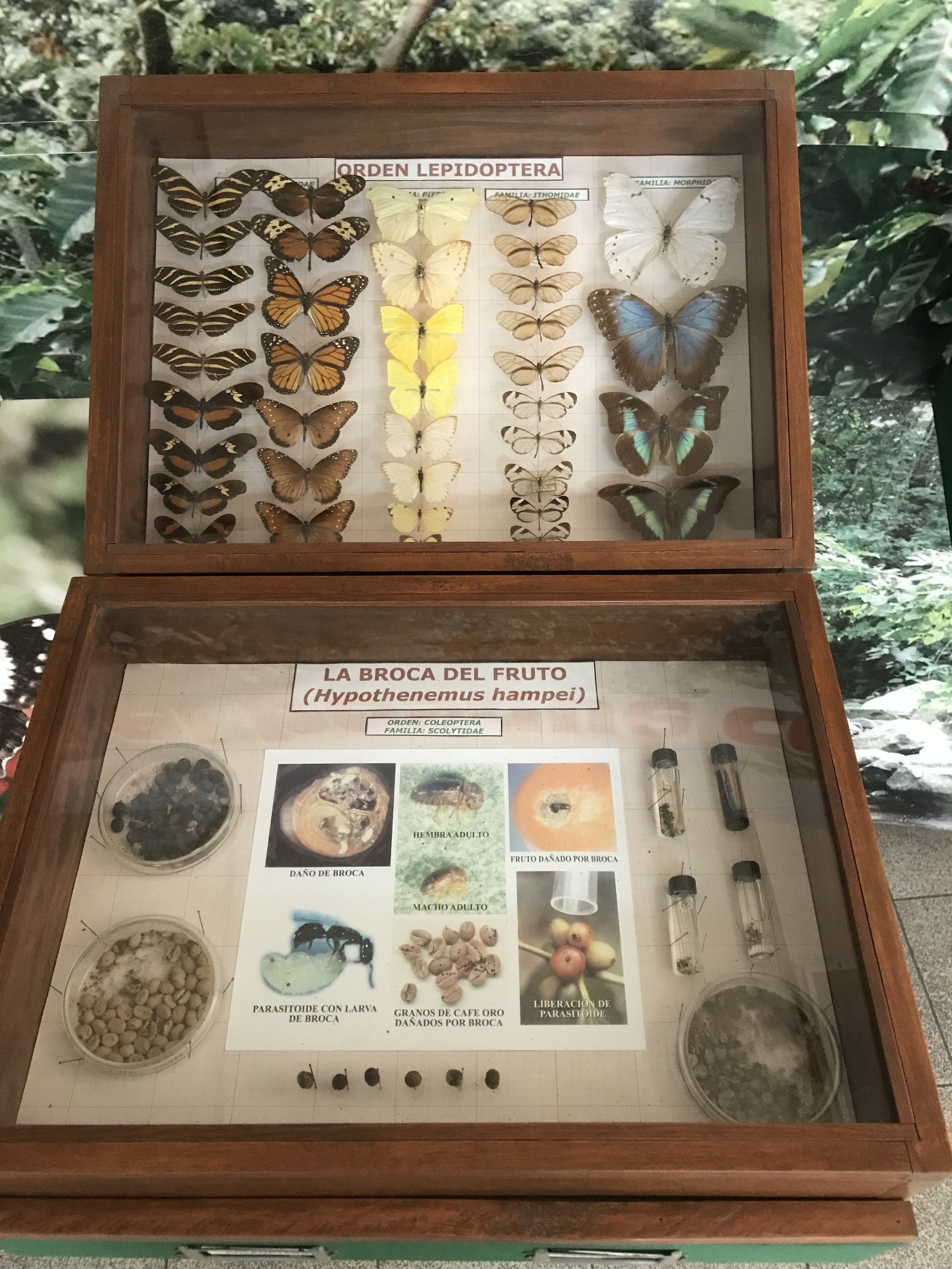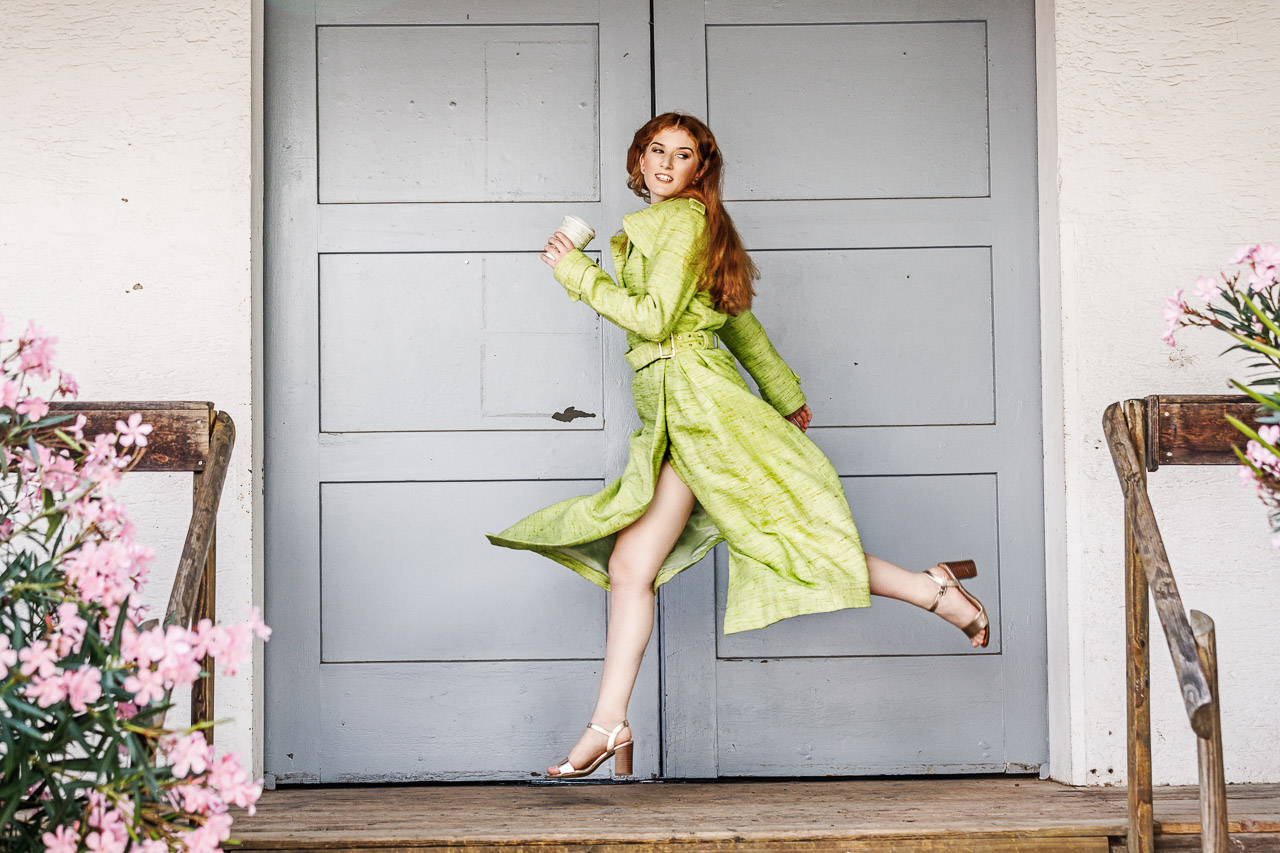Photo: © WEBER Packaging GmbH, 2019
My travel report
3rd part – A bugs life
A large part of the coffee produced by Andrés Quintanilla is exported to Germany. The company Amarella Trading, which is based in Mannheim, then sells the coffee to roasting companies or cafés that want to roast it themselves. To make this export possible, Andrés must register with the Ministry of Agriculture. Otherwise he would not be allowed to export. He must also register for production and processing at the mill. These registrations are important for statistics, for example. Every 15 days, Andrés has to submit a form to the Ministry, on which it is stated how much coffee has been harvested. If an export is imminent, this must also be registered. In addition, a certain amount of money has to be paid out of every sack of coffee sold, which can then be used for research into coffee plants, financing of trade fairs and marketing activities. For example, the Barista Championship held last weekend in San Salvador was financially supported.
Harmful and beneficial insects in coffee cultivation
The ministry also offers a small exhibition of insects living on coffee farms. Insects are an important part of coffee production. The insect world offers "good and bad bugs", as Andrés describes the situation. He explains that there is, for example, a red spider that eats the surface of the leaves and thus damages the whole plant. But in compensation for this, there are larger spiders living on the plantation that eat the red spiders and thus have a positive effect on the plant world.
In addition, many birds live on the farm, which also act as a "natural insecticide". One example is birds that feed on a certain type of grasshopper and thus prevent the grasshoppers from infesting the plants. Because of this coexistence of the animals, Andrés is able to avoid the use of sprays for the most part and thus produces untreated coffee.
Organic without expensive certificates
When asked why he does not have his production certified organic, he laughs and asks the counter-question "Why should I? Certificates have to be bought anew every year and are extremely expensive. In addition, there are many farms that have some certificates but still do not act according to these values (e.g. in connection with child labour). Therefore it is important for him to show us that even without certificates it is possible to produce a good coffee (which certainly meets all the requirements of "organic coffee") by paying attention to the interaction of the animals, the vegetation and a sustainable water management.
Butterflies living on the plantation. Photo: Noemi Gerhäusser for © WEBER Packaging GmbH, 2019
Bees, flies and bugs... Photo: Noemi Gerhäusser for © WEBER Packaging GmbH, 2019
The El Salvador group: Maren, Andrés and me. Photo: Andrés Quintanilla for © WEBER Packaging GmbH, 2019
Coffee beans that have been eaten by beetles. Photo: Noemi Gerhäusser for © WEBER Packaging GmbH, 2019
Here you can see smaller beetles, which can nevertheless cause great damage. Photo: Noemi Gerhäusser for © WEBER Packaging GmbH, 2019
This is a collection of the various bugs that live on coffee plantations. Photo: Noemi Gerhäusser for © WEBER Packaging GmbH, 2019
In this box you can see dragonflies, walking leaves and butterflies. Photo: Noemi Gerhäusser for © WEBER Packaging GmbH, 2019
Another box with bugs and butterflies. Photo: Noemi Gerhäusser for © WEBER Packaging GmbH, 2019
Read part 4 here in the news blog!
























































































